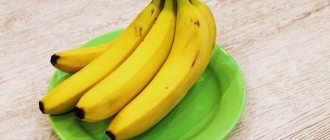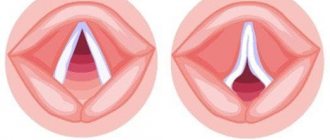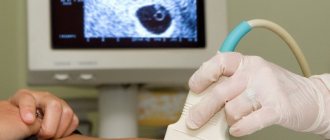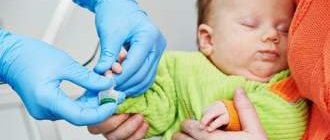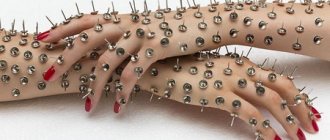How to give an enema to a baby?
Carrying out almost any procedure on a small child is a great difficulty for his parents.
An enema is no exception. Few people know how to do this for an infant. In total, in medicine it is customary to distinguish 2 types of enemas: cleansing and medicinal. As the name implies, the first is used for various poisonings and intoxications, in order to remove harmful substances from the body. Often a cleansing enema is performed when stool is retained, as well as in preparation for hardware examinations of the abdominal organs.
Using a medicinal enema, various drugs are usually administered, for example, for an inflammatory process localized in the rectum.
An enema can be given at any age, including infants. So, very often it is given to children fed with artificial formula: in this case, constipation is a common phenomenon. In addition, its use is indicated for constant regurgitation, as well as when it is necessary to introduce bacteriophages into the body.
Many parents, faced with the need to give an enema to their infant, do not know how to do it. First you need to prepare a whole set that will be needed during its implementation, namely:
- bulb-type balloon with a soft tip;
- solution for administration;
- container for liquid;
- thermometer for measuring the temperature of the prepared solution;
- diaper;
- disposable diapers ;
- Vaseline oil for lubricating the tip.
The volume of enema solution for infants (up to 3 months) is usually 20-30 ml. Therefore, balloon No. 1, whose capacity is 30 ml, is suitable for this procedure. Starting from 4 months to 2 years, to calculate the volume of solution required for an enema, 10 ml is added for each month of life. The volume of a medicinal enema for babies of the first year of life usually does not exceed 30 ml.
To carry out a cleansing enema for an infant, use a solution of sodium chloride, or, in its absence, boiled water. The temperature of the solution should be 27-30 degrees. To quickly and gently relieve constipation in children, glycerin is often used, which is added to water. As a rule, the effect of a water enema can be expected within 5-10 minutes.
How to give an enema to a baby?
Before giving an enema to a baby, you need to prepare all the above tools and solution. Then the required volume of the prepared solution is filled into the balloon, after which it is imperative to lubricate the tip itself with a small amount of petroleum jelly. The baby, if he is not yet 6 months old, is placed on his back and his legs are raised up. If the child is six months old or more, he is placed on his left side and his legs are brought to his tummy.
Taking the balloon in your right hand, squeeze it slightly, removing the air. With the left hand, the buttocks are spread apart and at the same time the tip is inserted into the baby’s rectum. In this case, the insertion depth should be 3-4 cm. In addition, there is a peculiarity of insertion: first, the tip is inserted towards the navel, and then parallel to the tailbone. After the liquid is introduced into the rectum, the balloon is removed without unclenching. Then the baby’s buttocks are squeezed for a few minutes.
After the child has emptied, the mother performs the toilet, washing the child as usual. If a medicinal enema was performed, it is better for the child to be in a horizontal position for at least an hour.
Thus, as you can see, you can give an enema to an infant at home. Before carrying out this procedure, it is better to consult a doctor and not resort to prescribing it yourself. Also, you should not do it often to avoid irritation of the anus.
Video: How to give an enema to a newborn baby
An infant suffers from digestive problems, so young mothers and fathers should know how to help their infant during constipation. A pediatrician will tell you and show you how to carry out this procedure correctly:
Giving an enema to a baby Watch video
How to perform the procedure on an adult
Sometimes an enema is needed urgently, but there is no one to turn to. You will learn how to give yourself an enema yourself and carry out a complete bowel cleansing procedure from this material:
ENEMA how to do the procedure. Colon cleansing with enema. Watch the video
Attention! The information presented in the article is for informational purposes only. The materials of the article do not encourage self-treatment
Only a qualified doctor can make a diagnosis and give treatment recommendations based on the individual characteristics of a particular patient. Found an error in the text? Select it, press Ctrl + Enter and we will fix everything!
Article updated: 05/13/2019
Step by step instructions
What is needed for the procedure
Before giving an enema to a newborn baby, you should prepare everything you need:
- a syringe with a rubber tip for infants with a volume of 30 or 360 ml, a rubber can (for children from 1-2 years old) or an Esmarch mug (from 3 years old);
- boiled water or solution at the required temperature;
- clean oilcloth or diaper;
- Vaseline, oil or baby cream;
- cotton wool or cotton pads.
Cleansing enema for babies
If you don't know how to give an enema to a newborn baby, follow our recommendations.
- Catch the right moment for the procedure, when the baby is calm, in a good mood, and smiling.
- Boil the syringe for half an hour to sterilize.
- Prepare water or solution at the desired temperature.
- Wash your hands thoroughly.
- Place an oilcloth or diaper on the changing table or couch.
- Draw the solution into a syringe.
- Lubricate the tip with oil or Vaseline.
- Place the syringe with the tip up and lightly press the bottom to release air.
- Lay the baby on his back, raising his legs. After one year of age, place children on their side and bend their knees.
- Spread your buttocks.
- Carefully insert the tip inside: 2.5 cm for infants, 3-5 cm for older children.
- Press the syringe and inject the liquid until the child experiences the first discomfort. Clamp the tip and after a few seconds continue the procedure.
- Squeeze your buttocks with your left hand and pull out the tip with your right.
- Keep your buttocks squeezed for 1-5 minutes.
- Lay the baby on his back, then on his side, then on his stomach. The liquid should be distributed throughout the intestines.
- Observe how the child breathes. The solution should be administered only while inhaling.
- After the baby has stool, remove the diaper and wash the baby.
Cleansing enema for children over 1 year old
For children aged 1-2 years, rubber cans of different sizes can be used instead of a syringe. For children aged 3 years and older, use Esmarch's mug. This is a rubber vessel with a tube, shaped like a heating pad. Its volume ranges from 1 to 2 liters. When performing the procedure for children over 3 years old, follow the general rules and adhere to additional recommendations.
- Do not give an enema without the child's consent! If the baby resists, try psychological preparation. You can show on a doll how the process will go. Convince him that it doesn't hurt and is safe.
- Lay the oilcloth so that one edge falls into a basin or wide bowl.
- Pour the solution into Esmarch's mug, open the tap and release the air.
- Place the mug 50-70 cm above the child. You can use a tripod for these purposes.
- Insert the tip into the anus 5-7 cm.
- Adjust the speed of liquid infusion using the tap.
- At the end of the procedure, the baby needs to lie on his side for 5-10 minutes.
- If the fluid supply is difficult, raise the balloon 20 cm higher and press the baby's knees more tightly to the stomach.
Medicinal enema
Before performing a medicinal enema, a cleansing enema is recommended.
- Prepare a rubber can.
- Place the rubber tube-shaped nozzle onto the tip.
- Fill the can with medication and release the air.
- Lubricate the tip of the tube with Vaseline.
- Place the child on his back, lift his legs with your left hand, and insert the tube into the anus 8-10 cm with your right hand.
- Watch how the baby reacts to the procedure.
- Squeeze out the medicine slowly.
- Leave the balloon compressed and remove the tube.
- Make sure your child lies still for 30 minutes. If the urge to go to the toilet occurs, try to persuade your baby not to move. The medicine must be absorbed.
Before giving your baby an enema, think carefully about the need for the procedure and consult your doctor. Colon cleansing at home should not cause physical or psychological trauma for the child. Do an enema only as a last resort, when other treatment methods (abdominal massage, glycerin suppositories, taking probiotics, etc.) are powerless.
Technique
The pediatrician will tell you how much liquid to pour into the child’s intestines. Typically, an enema for a newborn or infant is done with a soft bulb and no more than 50 ml of water is poured in. For children aged 2 years, the recommended enema volume is 100 ml, and for children aged 3 – 200 ml. Children over 10 years old need a 500 ml enema. When the liquid is infused, the child should not feel pain in the abdomen.
[node:field_field_doprekl2]
Before doing an enema at home, you need to prepare a place for the procedure: cover the bed with oilcloth so that the end of the waterproof fabric is lowered into the basin standing in front of the bed (in case the child does not contract the sphincter), and lay a diaper on the oilcloth. Then the child should be placed on the edge of the bed (preferably on the left side) and asked to bend his knees and pull them towards his stomach.
To make the procedure painless, it is recommended that the patient completely relax and take deep breaths through the mouth.
Cleansing enema
For children 4 years of age, it is better to use a syringe with a soft tip for the procedure. You need to press the bulb and release all the air, then lower it into the water and collect the required amount. For a cleansing enema, an older child will need an Esmarch mug, which consists of a vessel with a volume of up to 2 liters, a rubber tube with a clearance of 1 cm and a length of 1.5 meters connecting tubes to control the flow of liquid and a rubber (glass, ebonite) tip.
This device can be purchased at a pharmacy. Pour water (up to 1.5 liters) of the required temperature into a container and place it approximately one meter above the bed. To release air from the tubes, you need to open the valve and drain some water. Apply Vaseline to the tip and insert it into the anus with a gentle rotational movement, then move it towards the navel by 3-4 cm, and along the spine by another 3 cm.
After the tube is inserted, you need to open the valve (the water should not flow quickly as this can cause pain). If the liquid does not flow, then you should change the position of the container or stick the tip out 10–20 mm. After the container is empty, you need to take out the tip and press one buttock to the other so that the water does not leak out.
If the child is older, you can ask him to independently squeeze the anal sphincter and hold the water (5-10 minutes). When the urge to defecate arises, you need to give a potty or sit on the toilet, and it is recommended that bowel movements be portioned. The procedure is considered ineffective if only water and a small amount of feces come out.
The procedure is performed for children over 5 years old using an Esmarch mug.
Siphon enema
A siphon enema is a rapid, repeated cleansing of the lower digestive tract. A rubber tube is inserted into the rectum, with a funnel at the other end. Liquid is poured into the funnel and raised 50 cm above the patient’s anus. When the water stops decreasing from the funnel, it is lowered so that it is lower than the patient and kept in this position until the water begins to pour out.
The funnel continues to be raised and lowered until clean water flows out of the intestines. Typically, a procedure for an adult requires 10–12 liters of water. Using a siphon enema, you can effectively cleanse the intestines of feces and gases. It can be prescribed to children who do not benefit from a cleansing enema, for example, due to prolonged constipation.
The procedure is also indicated for poisoning by toxins and in preparation for surgery. It cannot be done in severe conditions of the patient. The tip is inserted into the anus in a circular motion at a distance of 30–40 cm. During the procedure, when the funnel is at the top, there is no water in the mouth, since this will lead to the penetration of air into the tube (if air gets in, the siphon principle does not work, the tube must be entered again).
Most patients do not tolerate the procedure well, so you need to carefully monitor their condition.
Laxative enema
This procedure is effective for persistent constipation or intestinal spasms, when you cannot pour in a lot of liquid. A hypertensive enema provides effective bowel movement by allowing water to leak out of the intestinal wall. After the procedure, a large amount of water leaves the body (swelling decreases).
Vaseline oil for constipation and reviews about it
For infusion, a 10% saline solution, a 20–30% magnesium sulfate solution, or a 20–30% sodium sulfate solution can be used. The procedure will require 50–100 ml of a solution heated to 37–38 oC.
For the remedy to work, it must remain in the intestines for 20–30 minutes. An oil enema allows easy passage of stool, since the oil softens the stool and ensures its rapid movement through the intestines; in addition, it is not absorbed and relieves muscle spasm, thereby normalizing peristalsis. An oil enema is prescribed if there is spastic or prolonged coprostasis or chronic inflammation of the colon.
For the procedure, vegetable oil is used (you can take sunflower, flaxseed, olive) or Vaseline. So, 2-3 tablespoons of oil are added to 100-200 ml of water and heated to 37-38 oC in a water bath. In order for the remedy to work, it takes 10–12 hours, so the procedure is done at night and the patient is allowed to get up only after the urge to defecate appears.
Emulsion enema is prescribed for seriously ill patients. Its effect occurs within 20–30 minutes. An emulsion solution is used, which contains 400 ml of chamomile infusion, beaten yolk, a teaspoon of bicarbonate and two tablespoons of glycerin or petroleum jelly. The substance is drawn into the container, the remaining air is removed (you need to press until the liquid comes out). The narrow end of the bulb is lubricated with Vaseline, and then inserted into the anus 10–12 cm, after which the contents are slowly introduced.
Solutions for laxative enema are administered in a small volume, so the procedure will require a container of 50–100 ml (bulb or Janet syringe)
Medicinal enema
This enema can be given locally (the active ingredient helps eliminate irritation, inflammation or relieve spasms in the large intestine) or for systemic use so that the drug is absorbed into the bloodstream, bypassing the liver. For local treatment, as part of enemas, a decoction of chamomile, rose hips, sea buckthorn oil or an antiseptic.
Sedatives, painkillers, sleeping pills, NSAIDs, and anticonvulsants can be administered through the rectum. Half an hour before the medicinal enema, the patient must undergo a cleansing enema. The medicinal composition is heated in a water bath to 39–40 oC (if it is colder, the urge to defecate will occur), a total of about 50–100 ml is required.
To avoid irritation, the medicine can be administered with a saline solution, and a decoction of starch can be used to suppress bowel movements. After enema procedures, you should not get up for about an hour. An enema for children should be recommended by a doctor; it should not be given to an infant just because he has not had a bowel movement since yesterday.
This is an emergency measure that will help the baby get rid of pain, but in no case is it a treatment. To prevent constipation, you need to eliminate its cause, adjust the menu and monitor the amount of fluid your child drinks. In some cases, it may be necessary to take probiotics, antispasmodics, or other medications.
Preparing for the procedure for newborns and older children
Any medical procedures for a child are prescribed by a doctor. Parents must always follow this rule. It is better for infants and children under 3 years of age to have an enema in a hospital setting, under the supervision of specialists.
If your pediatrician has allowed you to carry out the procedure at home, you will need a special medical device - a syringe (popularly called a “pear”). You can buy syringes of different sizes at the pharmacy. With soft rubber tips and plastic, replaceable and non-replaceable. For children over 10 years old, it makes sense to give an enema using an Esmarch mug (a rubber heating pad with a hose and a removable tip).
Table: volume of liquid for enema in relation to the age and body weight of the child
| Child's age | Child's weight, kg | Amount of liquid infused, ml |
| Newborn - 0–1 month. | Up to 4.2 | 25 |
| 1–2 months | Up to 5.1 | 30–40 |
| 2–3 months | Up to 5.8 | 40–50 |
| 3–6 months | Up to 7.9 | 50–100 |
| 6–12 months | Up to 10.5 | 100–180 |
| 1–2 years | Up to 12.7 | 180–250 |
| 2–9 years | Up to 35 | 250–400 |
| 10 years and older | From 38.5 | 500 |
When carrying out the manipulation, it is important to infuse the child with the volume of liquid that corresponds to his age. If there is less water (solution) in the enema, you will not get the expected effect from it.
If it is more, the baby will experience pain from stretching and spasm of the intestinal walls.
What else do you need to prepare for the procedure?
- Sterilize (boil) a syringe purchased at a pharmacy in water for 30 minutes. Next, before each use, it is enough to boil the rubber syringe for 5–10 minutes. And for the one with a removable tip, only the tip can be sterilized. The pear is simply washed under running water.
- You will also need a disposable diaper (or oilcloth plus a diaper) to place under the baby’s bottom, soap and a towel to wash and dry the baby after the manipulation.
- To lubricate the tip of the syringe and the anus, prepare either vegetable oil - boil it first - or Vaseline.
- The toilet (potty) should be nearby.
- The enema solution also needs to be prepared in advance. Its composition will depend on what type of enema your doctor recommended.
This is what Esmarch's mug looks like. It is used to give an enema to children over 10 years of age and adults.
Recipes for solutions
Prepare the enema solution immediately before the procedure. After preparation, it must be cooled to room temperature or the child’s body temperature (depending on the type of enema).
- Cleansing. Medium or large, cool or warm enema. Boil water - it is better to use purified drinking water or artesian water. Cool it to the desired temperature, and use a syringe or measuring cup to measure the recommended volume.
- With a decoction of chamomile. A simple medium or large enema, cool or warm. 1 tbsp. l. dried flowers pour 1 tbsp. (200 ml) boiling water, bring to a boil, simmer over low heat for 15 minutes. Remove from heat, let it brew for half an hour, strain, and squeeze out the raw materials. Bring the volume of boiled water to the recommended volume. Cool to desired temperature.
- With lemon juice or apple cider vinegar. Cool or warm microenema. Take 1 liter of warm purified boiled water. Squeeze the juice of 1 medium lemon into it or add 1 tsp. vinegar (definitely apple cider vinegar). Use the solution in the recommended amount (according to the baby’s age).
- Oily. Warm microenema - its volume, even in adults, does not exceed 100 ml. Infants - 15-25 ml, children up to 2-3 years old - 50 ml, up to 6 years old - 75 ml, after - 100 ml. For 100 ml of purified boiled water (hot), take 3 tbsp. l. boiled vegetable oil or Vaseline. Mix the ingredients, cool the solution to 37–40°C.
- Saline or hypertonic. Cool or warm microenema - 0.5 tsp. Dissolve (2.5 g) regular kitchen salt in 1 tbsp. (200 ml) warm boiled water. If you take sea salt, the enema will have an antiseptic effect.
- Glycerin. Warm microenema - volume no more than 100 ml. You can purchase drinking glycerin at a pharmacy that has a prescription department. Mix 1 tsp. (5 ml) glycerin with 0.5 tbsp. (100 ml) warm (37°C) boiled water.
- Soapy. Warm microenema - 1 tsp. dissolve finely grated baby soap (natural, without dyes and fragrances, household soap will do) in 0.5 tbsp. (100 ml) warm purified boiled water. You can also add 1 tsp to the soap solution. (5 ml) drinking glycerin.
How to do an enema correctly?
First of all, pay special attention to sterility so as not to introduce foreign harmful microbes into the child’s young, fragile body. Boil the syringe in water for thirty minutes, then pull it out and let it cool
While it is cooling, prepare the solution that you will pour, a cloth waterproof diaper, Vaseline or oil. Wash your hands thoroughly with soap
Boil the syringe in water for thirty minutes, then pull it out and let it cool. While it is cooling, prepare the solution that you will pour, a cloth waterproof diaper, Vaseline or oil. Wash your hands thoroughly with soap.
Before the procedure, play with your baby to distract him and relieve him of any discomfort, this will make the procedure easier for you.
Turn the baby on his side or back - this is the most comfortable position for both you and him.
Gently pull your legs bent at the knees to your chest, lubricate the anus with oil and insert the tip of the syringe into it to a depth of two to three centimeters. Slowly and slowly release the solution so as not to damage the intestinal mucosa.
After introducing all the liquid, carefully pull out the syringe and bring the child’s buttocks together. This must be done so that the medicine is quickly absorbed into the blood through the capillaries of the colon.
The result of this procedure may appear immediately or even after a few hours - the child will poop, so immediately put on a diaper.
After your baby poops, wash him and wipe him dry.
Although an enema is the fastest and relatively safe way to treat constipation, do not get too carried away with this type of treatment, because the baby’s intestinal microflora is not yet formed, and the digestive tract system has not matured to full functioning.
It should also be remembered that a water enema not only clears the intestines of excess feces, but also flushes out beneficial microbes that the body needs to properly digest food.
If you have persistent, systematic constipation, you should definitely consult a doctor.
Water enema
The procedure is carried out with boiled water at 25-27 degrees. You need to take a measurement with a thermometer. The pear should be thoroughly disinfected. The amount of liquid administered, as in the case of a soap solution, depends on the age of the child. The dosage is similar.
This enema is good for colic in a baby. Place it if there are no results from other treatment measures. You can’t do it all the time, every day! The best option is to look for other methods of eliminating pain. The body must cope with the situation on its own.
So, constipation in infants is common. There's no need to panic. There are many known methods for relieving constipation. Enemas are the last resort. If your baby is constipated, it is not recommended to treat yourself. You should consult a doctor and act based on his recommendations.
The best option is not to use outside means so that the body can cope on its own. An enema is allowed when other methods have not helped the child. There are different types of enemas based on their physiological effects. The type of procedure must be prescribed by a doctor. If a baby is constipated, you need to give an enema carefully, carefully, observing the baby’s reaction. The frequency of use of rinsing is determined by the doctor in each specific case! You should not accustom your child’s body to the procedure. The processes must take place naturally, each organism has everything it needs. You should know and remember this before using extraneous methods.
Enema for a child: how to do it correctly and safely
What is needed for this?
Before starting the procedure, prepare everything you may need. The list of such things includes:
- A syringe with a silicone or rubber tip, volume 30 - 360 ml - for a newborn and a baby up to one year. Rubber spray - for a child from 1 to 2 years old.
- Oilcloth and sheet or diaper.
- Vaseline or baby oil.
- Water thermometer to measure the temperature of enema water for a child.
Pre-sterilize the syringe or spray bottle. Boil the water and cool to a temperature of +33 – 35 °C.
How to give an enema to a baby?
Fill the syringe with water and wipe the tip with baby oil or Vaseline. Then follow this order of execution:
- Prepare a convenient place for giving your child an enema.
- Place oilcloth and cover with a diaper or sheet on top.
- Place the baby on the back, tuck the legs towards the tummy, bending them at the knees. Place a child over one year old on his side with his knees bent.
- Turn the pear with the tip up and squeeze slightly, releasing the air.
- Insert the tip into the anus: for a baby under one year old by 2 cm, for an older one – by 3–4 cm.
- Slowly squeeze the syringe to release water.
- Squeeze your buttocks with one hand and remove the bulb with the other.
- Keep your buttocks squeezed for a few minutes.
- If everything is done correctly, the baby will poop within 5 to 10 minutes.
- After the procedure, rinse the rubber bulb thoroughly and dry it.
- Types of enemas for a child
At home, you can give your baby a cleansing and medicinal enema. Each of them has its own purpose and implementation features.
Cleansing
It is these enemas that are used for constipation in children. In addition, they are carried out when it is necessary to prepare the intestines for the administration of medications through the anus. Cleansing enemas free the intestines from fecal plugs and gases.
To properly administer an enema to a baby, you need to know how much water is required. Its volume is determined taking into account the age of the baby:
- first month of life – 20 – 25 ml;
- 1 – 2 months – 40 ml;
- 2 – 4 months – 50 – 60 ml;
- 6 – 9 months – 120 ml;
- 9 – 12 months – 140 – 180 ml;
- 1 – 2 years – 210 – 250 ml.
Cleansing enemas are laxative and rinsing.
Laxatives are prescribed for infrequent constipation. They use substances that irritate the intestinal walls. As a result, peristalsis increases and feces are expelled.
The following formulations can be used as a laxative enema for constipation in children:
- 10 g of salt is dissolved in 100 ml of water. Heat the liquid to 28–35 °C and give the child an enema.
- 40 – 180 ml of vegetable oil (sunflower or hemp) are heated to a temperature of +37 °C. It is administered to the baby using a rubber bulb.
A rinsing enema is most often done at elevated body temperatures and frequent constipation. If you need to reduce your baby's fever, make a saline solution: dissolve half a teaspoon of salt in 100 ml of water.
For constipation, add chamomile decoction or a tablespoon of glycerin to enema water at a temperature of 25–27 °C.
Medicinal
Medicinal enemas are prescribed by a doctor. They are used in cases where the baby cannot take the drug orally. Usually the pediatrician tells parents how to give an enema to a baby. But there are some general rules.
What do you need to know before giving an enema to your baby?
Babies under one year old can have an enema only after the approval of the pediatrician. There is no need to resort to the procedure if stool is retained for 1 - 2 days.
If the baby feels well, is not capricious, looks happy and healthy, the absence of bowel movements for 2 to 3 days is considered normal.
With frequent enemas, the child’s intestines learn to get rid of feces and gases on their own. As a result, it will be difficult to normalize its operation.
The ability to give an enema to a child helps parents alleviate his condition
But it is important not to abuse this procedure and carry it out only in exceptional cases.
Types of enemas
Cleansing
A cleansing enema is done for children to remove gas and fecal plugs from the intestines, before introducing medications into the anus or before diagnosing the gastrointestinal tract. Contraindications: suspicion of appendicitis, adhesions or intestinal obstruction.
The volume of fluid administered will depend on the age of the baby. Before giving your child an enema, familiarize yourself with the dosages.
Cleansing enemas are divided into rinsing and laxative. For the purpose of rinsing, for atonic constipation (occurs at elevated temperatures, during heat, with insufficient food, hormonal disorders), boiled water of 25-27 degrees is used. You can dissolve substances in it that will enhance peristalsis:
- salt (half a teaspoon);
- glycerin (two teaspoons);
- baby soap;
- chamomile decoction (one teaspoon of dry herb per glass of boiling water);
- vegetable oil (teaspoon).
For elevated temperatures, use saline solution. Unlike pure water, it is not absorbed into the intestines and removes harmful metabolic products.
For spastic constipation (occurs due to chaotic intestinal peristalsis and impaired movement of feces), laxative enemas are performed. They can be oil or glycerin based. Thanks to this procedure, the intestinal mucosa is irritated, peristalsis is enhanced, and after 3-4 hours feces and gas plugs are released. To carry it out, select one of the methods.
- Heat 40-180 ml of oil (sunflower, vaseline, hemp) to a temperature of 37 degrees and insert into the anus. The oil relaxes the muscles of the intestines, enveloping the walls. Evacuation will follow 1-2 hours after the enema.
- Dissolve 10 grams of salt in 100 ml of water. Water temperature is 28-35 degrees. The solution is used for weak peristalsis.
- The procedure can be carried out using the drug Microlax (volume 5 ml). An enema for a 3-year-old child can be performed over the entire length of the tip. For newborns and children under 3 years of age, the tip is inserted halfway. Microlax does not injure the intestinal walls and gives a laxative effect.
An alternative to an enema for the purpose of relaxation can be a gas outlet tube. It will remove gas plugs in the intestines. This, in turn, will promote the movement of stool.
Medicinal and nutritional
Medicinal enemas allow the administration of antiparasitic and anti-inflammatory drugs. They are used if the child cannot take medications himself (vomiting, unconscious, etc.) The intestines absorb liquid and drugs dissolved in it well. This type of enema is performed half an hour after the cleansing one, so that the beneficial substances are absorbed as much as possible. The medicine dissolves in water at a temperature of 35-37 degrees. The volume of fluid administered depends on the age of the child.
These enemas are performed exclusively by doctors in the hospital to treat dangerous diseases or severe poisoning.
The benefits and harms of an enema
There is a category of people who, at the slightest delay in stool, immediately do an enema. But this procedure, in addition to its advantages, has many negative sides that should be remembered.
The benefits of an enema include the following:
- Rapid emptying of the intestines even with prolonged constipation.
- High-quality cleansing of the body from waste and toxins.
- Prevention of congestion.
- Reducing the load on the liver.
Now let's list the existing disadvantages:
- Quick adaptation to this method of emptying.
- Changing the balance of natural intestinal flora.
- Violation of digestive functions and water balance.
Knowing the pros and cons of the most popular home procedure, each person will be able to determine for themselves the middle ground that will not harm the body.
In conclusion, I would like to remind you once again that any intervention in the body’s functioning is associated with risks. An enema performed incorrectly can also lead to the most unexpected consequences. Therefore, any independent treatment must be agreed with a doctor.
“Important: all information on the site is provided for informational purposes only. Before applying any recommendations, consult with a specialist in the field.
Neither the editors nor the authors are responsible for any possible harm caused by the materials.”
Step by step instructions
What is needed for the procedure
Before giving an enema to a newborn baby, you should prepare everything you need:
- a syringe with a rubber tip for infants with a volume of 30 or 360 ml, a rubber can (for children from 1-2 years old) or an Esmarch mug (from 3 years old);
- boiled water or solution at the required temperature;
- clean oilcloth or diaper;
- Vaseline, oil or baby cream;
- cotton wool or cotton pads.
Cleansing enema for babies
If you don't know how to give an enema to a newborn baby, follow our recommendations.
- Catch the right moment for the procedure, when the baby is calm, in a good mood, and smiling.
- Boil the syringe for half an hour to sterilize.
- Prepare water or solution at the desired temperature.
- Wash your hands thoroughly.
- Place an oilcloth or diaper on the changing table or couch.
- Draw the solution into a syringe.
- Lubricate the tip with oil or Vaseline.
- Place the syringe with the tip up and lightly press the bottom to release air.
- Lay the baby on his back, raising his legs. After one year of age, place children on their side and bend their knees.
- Spread your buttocks.
- Carefully insert the tip inside: 2.5 cm for infants, 3-5 cm for older children.
- Press the syringe and inject the liquid until the child experiences the first discomfort. Clamp the tip and after a few seconds continue the procedure.
- Squeeze your buttocks with your left hand and pull out the tip with your right.
- Keep your buttocks squeezed for 1-5 minutes.
- Lay the baby on his back, then on his side, then on his stomach. The liquid should be distributed throughout the intestines.
- Observe how the child breathes. The solution should be administered only while inhaling.
- After the baby has stool, remove the diaper and wash the baby.
Cleansing enema for children over 1 year old
For children aged 1-2 years, rubber cans of different sizes can be used instead of a syringe. For children aged 3 years and older, use Esmarch's mug. This is a rubber vessel with a tube, shaped like a heating pad. Its volume ranges from 1 to 2 liters. When performing the procedure for children over 3 years old, follow the general rules and adhere to additional recommendations.
- Do not give an enema without the child's consent! If the baby resists, try psychological preparation. You can show on a doll how the process will go. Convince him that it doesn't hurt and is safe.
- Lay the oilcloth so that one edge falls into a basin or wide bowl.
- Pour the solution into Esmarch's mug, open the tap and release the air.
- Place the mug 50-70 cm above the child. You can use a tripod for these purposes.
- Insert the tip into the anus 5-7 cm.
- Adjust the speed of liquid infusion using the tap.
- At the end of the procedure, the baby needs to lie on his side for 5-10 minutes.
- If the fluid supply is difficult, raise the balloon 20 cm higher and press the baby's knees more tightly to the stomach.
Medicinal enema
Before performing a medicinal enema, a cleansing enema is recommended.
- Prepare a rubber can.
- Place the rubber tube-shaped nozzle onto the tip.
- Fill the can with medication and release the air.
- Lubricate the tip of the tube with Vaseline.
- Place the child on his back, lift his legs with your left hand, and insert the tube into the anus 8-10 cm with your right hand.
- Watch how the baby reacts to the procedure.
- Squeeze out the medicine slowly.
- Leave the balloon compressed and remove the tube.
- Make sure your child lies still for 30 minutes. If the urge to go to the toilet occurs, try to persuade your baby not to move. The medicine must be absorbed.
Before giving your baby an enema, think carefully about the need for the procedure and consult your doctor. Colon cleansing at home should not cause physical or psychological trauma for the child. Do an enema only as a last resort, when other treatment methods (abdominal massage, glycerin suppositories, taking probiotics, etc.) are powerless.
Support the project - share the link, thank you!
243 12 Gift for a 12-year-old girl: we are preparing surprises for fashionistas and smart girls 309 12 Gift for a 12-year-old boy: a holiday in the air, on horseback or in another country 365 12 Gift for an 8-year-old boy: surprises for smart people, athletes, creative individuals and others only
How the procedure is prohibited
There are several rules that parents often break, so you need to know how not to do an enema:
- The solution is not administered quickly. Often, a child may cry or scream, after which the parents hastily inject the contents of the syringe, causing the child to feel pain.
- Often parents neglect to drain the syringe or thoroughly wash their hands. In this case, the child can be infected with an infection that penetrates the intestines.
- Often the solution or water is chosen at the wrong temperature, in which case intestinal inflammation begins in newborns, possibly increasing toxins in the body.
- The enema should be administered slowly and carefully. It is forbidden to make sharp manipulations during the procedure so as not to damage the baby’s delicate skin.
- The enema must be administered strictly according to the instructions, and a common mistake made by parents is failure to comply with the volume of fluid administered. In this case, the intestines begin to stretch, which can negatively affect newborns.
- Before installing the syringe, you should always release the air and this is done just before inserting it. If air gets into the intestines, the baby will have flatulence.
It is recommended that before doing the procedure, not only calm the child, but also put yourself in order. An enema for newborns should be done in a calm atmosphere, without haste.


